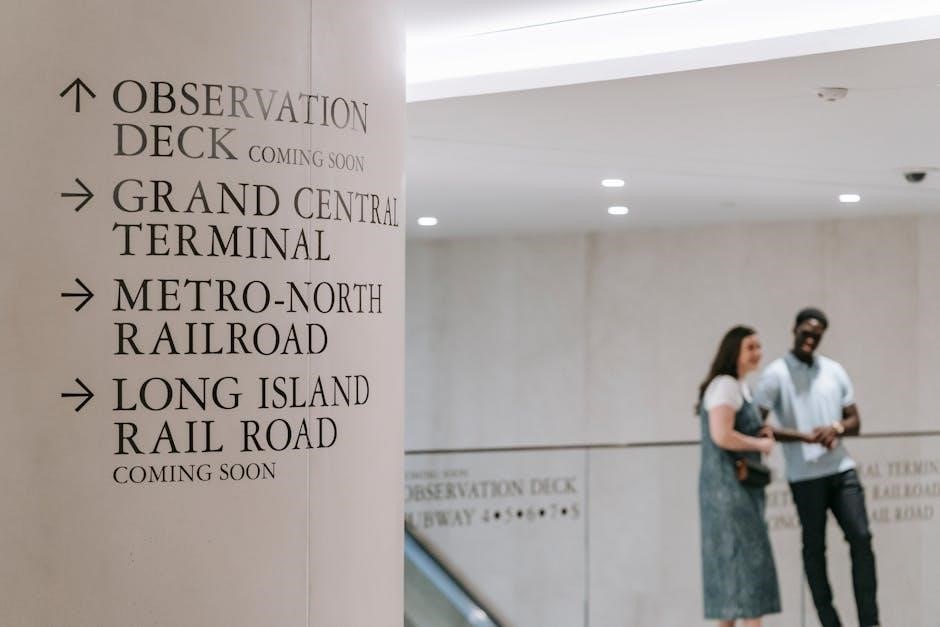us guided thyroid biopsy cpt code

CPT (Current Procedural Terminology) codes are standardized medical codes used to report procedures and services to health insurers․ They play a crucial role in medical billing and reimbursement, ensuring accurate documentation and payment for healthcare services․ Developed by the American Medical Association (AMA), these codes are regularly updated to reflect advancements in medical practices and technologies․ Understanding CPT codes is essential for healthcare providers, billers, and insurers to navigate the complex billing process efficiently․ Accurate coding ensures proper reimbursement and compliance with regulatory requirements, making it a cornerstone of modern healthcare administration․
1․1․ What are CPT Codes?
CPT (Current Procedural Terminology) codes are standardized codes used to describe medical, surgical, and diagnostic services․ They are designed to communicate uniform information about medical procedures and services among healthcare providers, patients, and payers․ These codes are maintained by the American Medical Association (AMA) and are updated annually to reflect advancements in medical technology and practices․ CPT codes are categorized into three levels: Level I (universal codes), Level II (codes for non-physician services), and Level III (temporary codes for emerging technologies)․ They are essential for accurate billing, insurance reimbursement, and data collection, ensuring that healthcare services are documented consistently and efficiently across the United States․
1․2․ Importance of CPT Codes in Medical Billing
CPT codes are vital for accurate and efficient medical billing, ensuring healthcare providers receive proper reimbursement for their services․ They standardize the description of medical procedures, making it easier for insurance companies to process claims․ By using specific codes for procedures like US-guided thyroid biopsies, healthcare providers can communicate the exact nature of the service rendered, reducing errors and delays in payment․ CPT codes also facilitate compliance with regulatory requirements and prevent legal issues related to incorrect billing․ Additionally, they aid in data collection and analysis, helping to track healthcare trends and improve patient care․ Overall, CPT codes are fundamental to the financial and operational integrity of healthcare practices․

Overview of Thyroid Biopsy
A thyroid biopsy is a medical procedure to examine thyroid tissue, often to diagnose nodules or masses․ It involves removing cells for pathological analysis․
2․1․ What is a Thyroid Biopsy?
A thyroid biopsy is a diagnostic procedure where tissue or cells are extracted from the thyroid gland for pathological examination․ It is commonly performed to evaluate thyroid nodules or masses, helping determine if they are benign or malignant․ The procedure is typically minimally invasive and may involve fine-needle aspiration (FNA) or core needle biopsy (CNB)․ Guided by imaging techniques like ultrasound, the biopsy ensures precise tissue sampling․ This diagnostic tool is critical for identifying thyroid conditions, such as cancer, cysts, or inflammatory diseases, and plays a pivotal role in guiding treatment decisions․ Accurate results from the biopsy are essential for effective patient management and care․
2․2․ Types of Thyroid Biopsy Procedures
Thyroid biopsy procedures are categorized into two main types: fine-needle aspiration (FNA) and core needle biopsy (CNB)․ FNA involves using a thin needle to extract cells from the thyroid gland for cytological evaluation․ It is minimally invasive and commonly used for evaluating thyroid nodules; CNB, on the other hand, uses a slightly larger needle to obtain tissue samples, providing more detailed histological information․ Both procedures are often guided by ultrasound to ensure precision and minimize complications․ Additionally, ultrasound-guided biopsies enhance accuracy, especially for smaller or difficult-to-access nodules․ These procedures are critical for diagnosing thyroid conditions, such as cancer, and guiding appropriate treatment plans․ Each method has distinct advantages and is selected based on clinical indications and patient needs․
2․3․ Indications for Thyroid Biopsy
Thyroid biopsy is primarily indicated for evaluating suspicious thyroid nodules or masses․ Common criteria include nodules larger than 1 cm, especially if they exhibit concerning ultrasound features such as irregular margins, increased vascularity, or microcalcifications․ Symptoms like difficulty swallowing, hoarseness, or rapid nodule growth may also warrant a biopsy․ Additionally, a history of thyroid cancer or radiation exposure increases the likelihood of recommendation․ Clinical guidelines often emphasize the role of imaging in identifying high-risk lesions․ Patient history, including age and overall health, further influences the decision․ These indications ensure that biopsies are performed when there is a higher suspicion of malignancy, aiding in timely and accurate diagnosis․ Regular monitoring of nodules and adherence to clinical guidelines are essential for optimal patient outcomes․

Role of Ultrasound in Thyroid Biopsy
Ultrasound guidance enhances precision in thyroid biopsy, ensuring accurate needle placement and minimizing complications․ It provides real-time imaging, improving diagnostic accuracy and patient safety during procedures․
3․1․ Ultrasound-Guided Thyroid Biopsy: An Overview
Ultrasound-guided thyroid biopsy is a minimally invasive procedure that uses real-time imaging to accurately target thyroid nodules or lesions․ This technique ensures precise needle placement, reducing the risk of complications and improving diagnostic accuracy․ It is particularly useful for lesions that are difficult to palpate or locate anatomically․ The procedure typically involves a fine-needle aspiration (FNA) or core needle biopsy (CNB), with ultrasound providing continuous visualization․ This method enhances patient safety, minimizes discomfort, and increases the likelihood of obtaining sufficient tissue samples for analysis․ It is also essential for coding purposes, as it often requires specific CPT codes to reflect the use of ultrasound guidance during the biopsy procedure․
3․2․ Advantages of Ultrasound Guidance
Ultrasound guidance offers several advantages in thyroid biopsy, enhancing both accuracy and safety․ It provides real-time imaging, allowing precise needle placement and reducing the risk of complications․ This method is particularly beneficial for deep or non-palpable nodules, ensuring accurate tissue sampling․ Ultrasound guidance also minimizes patient discomfort and avoids damage to surrounding structures․ Additionally, it improves diagnostic yield by targeting specific areas of concern․ The use of ultrasound reduces the need for repeat procedures and enhances patient safety․ These benefits make ultrasound-guided biopsy a preferred method for both physicians and patients, ensuring reliable results while maintaining a minimally invasive approach․
3․3․ Imaging Techniques Used in Thyroid Biopsy
Ultrasound is the primary imaging modality used in thyroid biopsy due to its high-resolution imaging and real-time guidance․ It enables precise visualization of thyroid nodules, helping to distinguish solid from cystic lesions․ Doppler ultrasound assesses vascularity, aiding in nodule characterization․ Other imaging techniques, such as CT or MRI, are rarely used but may be employed for complex cases․ Ultrasound guidance ensures accurate needle placement, reducing complications and improving diagnostic accuracy․ Its non-invasive nature and lack of radiation make it the preferred choice for thyroid biopsy procedures․ Advanced ultrasound features, like elastography, further enhance diagnostic capabilities, providing a comprehensive evaluation of thyroid nodules․

CPT Codes for US Guided Thyroid Biopsy
This section details the specific CPT codes used for US-guided thyroid biopsy, ensuring accurate billing and reimbursement for medical procedures․
4․1․ Primary CPT Codes for the Procedure
The primary CPT code for an ultrasound-guided thyroid biopsy is 76942, which represents the ultrasound guidance portion of the procedure․ This code is used for imaging guidance during needle placement․ Additionally, the biopsy itself is reported using either 85146 for fine-needle aspiration (FNA) or 85147 for core needle biopsy (CNB)․ These codes are essential for accurate billing, as they distinguish between diagnostic and therapeutic procedures․ Proper documentation of the procedure type and imaging guidance is crucial for correct reimbursement․ Always verify the most recent CPT guidelines to ensure compliance with coding standards․

4․2․ CPT Code for Fine-Needle Aspiration (FNA)
The CPT code for fine-needle aspiration (FNA) in a thyroid biopsy is 85146․ This code specifically represents the cytological examination of the aspirate obtained during the procedure․ FNA is a diagnostic tool used to assess thyroid nodules or masses, providing cytological samples for evaluation․ When performing an ultrasound-guided FNA, the code 76942 is also required to report the imaging guidance․ Accurate coding is essential for proper reimbursement, as payers require clear documentation of both the biopsy method and the use of ultrasound guidance․ Always verify the patient’s medical history and the procedure’s specifics to ensure correct code selection․
4․3․ CPT Code for Core Needle Biopsy (CNB)
The CPT code for a core needle biopsy (CNB) of the thyroid is 85147․ This code is used when a larger tissue sample is required for histopathological examination, often for diagnostic clarification․ CNB is typically performed under ultrasound guidance, and the imaging component is reported separately using 76942․ Unlike FNA, CNB provides a core tissue sample, which can offer more detailed diagnostic information․ It is essential to document the medical necessity and the specifics of the procedure to ensure accurate coding․ Proper coding ensures appropriate reimbursement and reflects the complexity of the biopsy method․ Always verify the procedure details and patient indications to avoid coding errors․
4․4․ CPT Code for Ultrasound Guidance
The CPT code for ultrasound guidance during a thyroid biopsy is 76942․ This code is used specifically for the ultrasound imaging portion of the procedure, providing visualization to guide the needle placement accurately․ It is an add-on code and must be billed separately from the primary biopsy procedure codes․ The use of ultrasound guidance enhances precision, reducing complications and improving diagnostic accuracy․ Proper documentation of the imaging component is essential for accurate reimbursement․ This code applies to both fine-needle aspiration (FNA) and core needle biopsy (CNB) procedures when ultrasound is utilized․ Always ensure compliance with coding guidelines to avoid claim denials․

Billing and Coding Guidelines
Billing and coding for US-guided thyroid biopsy requires adherence to specific guidelines to ensure accurate reimbursement․ Proper documentation of the procedure, including ultrasound guidance, is essential․ Stay updated on coding changes and use the correct modifiers to avoid claim denials․ Compliance with payer policies and accurate submission of claims are critical for timely payment․ Regular audits and training help maintain coding accuracy and compliance with regulations․ Always verify patient eligibility and ensure all necessary forms are completed before the procedure․ Detailed records of imaging and biopsy procedures are vital for seamless billing processes․
5․1․ Medicare and Insurance Reimbursement
Medicare and insurance reimbursement for US-guided thyroid biopsy depends on accurate coding and documentation․ Payers typically cover the procedure when deemed medically necessary, such as for diagnostic evaluation of thyroid nodules․ CPT code 76942 is commonly used for ultrasound guidance, while biopsy codes like 10012 or 10021 may apply based on the procedure type․ Reimbursement rates vary by payer policies, with Medicare adhering to specific fee schedules․ Pre-authorization may be required for certain cases․ Detailed documentation, including imaging results and biopsy rationale, is essential for claim approval․ Ensuring compliance with payer guidelines and submitting claims with correct modifiers helps avoid reimbursement delays or denials․
5․2․ Documentation Requirements
Accurate documentation is critical for US-guided thyroid biopsy billing․ Medical necessity must be clearly stated, with records detailing the rationale for the procedure, such as suspicious nodules or abnormal imaging․ Procedure reports should include the date, patient demographics, ultrasound findings, and biopsy method (e․g․, FNA or CNB)․ Documentation must specify the use of ultrasound guidance and note the number of samples collected․ Coding details, including relevant CPT codes (e․g․, 76942, 10012), should be supported by operative reports and imaging studies․ Patient consent and compliance with payer guidelines are also essential․ Complete documentation ensures accurate reimbursement and avoids claim denials․
5․3․ Modifiers and Their Usage
Modifiers play a crucial role in accurately coding US-guided thyroid biopsy procedures․ Commonly used modifiers include RT and LT to denote right or left side procedures, ensuring proper reimbursement․ Modifier 26 is applied when only the professional component (e․g․, radiologist interpretation) is billed․ Modifier 50 is used for bilateral procedures, while 59 indicates a distinct procedural service․ Accurate modifier usage prevents claim denials and ensures compliance with payer guidelines․ Documentation must clearly support the use of modifiers, such as laterality or bilateral procedures, to avoid coding errors․ Proper application of modifiers ensures seamless billing and optimal reimbursement for US-guided thyroid biopsy services․

Clinical Scenarios and Coding
Clinical scenarios in US-guided thyroid biopsy coding involve distinguishing diagnostic vs․ therapeutic procedures, nodules vs․ masses, and suspicious vs․ benign findings for accurate CPT code assignment․
6․1․ Coding for Diagnostic vs․ Therapeutic Biopsy
In US-guided thyroid biopsy, distinguishing between diagnostic and therapeutic procedures is crucial for accurate coding․ Diagnostic biopsies aim to identify or rule out conditions, typically using fine-needle aspiration (FNA) or core needle biopsy (CNB) techniques․ These procedures are coded using CPT codes 60100 or 60102 for FNA and 60130 or 60135 for CNB․ Therapeutic biopsies, such as those involving cyst drainage or abscess treatment, are less common but require different coding․ Clinicians must document the purpose of the biopsy to ensure correct CPT code assignment․ Proper differentiation prevents billing errors and ensures appropriate reimbursement for medical services provided․
6․2․ Coding for Thyroid Nodules vs․ Masses
When coding for US-guided thyroid biopsy, it is essential to differentiate between thyroid nodules and masses․ Thyroid nodules are typically small, solid, or fluid-filled growths, while masses may imply larger or more complex lesions․ CPT coding for biopsy procedures remains consistent, regardless of whether the target is a nodule or mass․ However, documentation must clearly describe the lesion type and characteristics․ For example, fine-needle aspiration (FNA) of a thyroid nodule is coded as 60100, while core needle biopsy (CNB) is coded as 60130․ Accurate distinction ensures proper billing and reimbursement, as payer policies may vary based on lesion classification․ Always rely on imaging and clinical documentation for precise coding․
6․3․ Coding for Suspicious vs․ Benign Findings
Coding for US-guided thyroid biopsy differs based on whether findings are suspicious or benign․ The CPT codes for the procedure itself, such as fine-needle aspiration (FNA) or core needle biopsy (CNB), remain the same regardless of the biopsy results․ However, the distinction lies in the diagnosis coding (ICD-10) and subsequent treatment plans․ Suspicious findings may require additional codes for diagnostic workup or referrals, while benign results may simplify the coding process․ Accurate documentation of biopsy outcomes is critical for proper reimbursement and patient care․ Always ensure compliance with payer guidelines and coding standards when reporting these cases․

Common Errors in Coding
Common errors include using incorrect CPT codes, such as confusing diagnostic and therapeutic procedures․ Misapplying modifiers and failing to report ultrasound guidance separately are frequent oversights․ Always verify codes․
7․1․ Misuse of CPT Codes
One of the most common errors in coding for US-guided thyroid biopsy is the misuse of CPT codes․ This often occurs when coders assign codes intended for non-image-guided procedures to ultrasound-guided biopsies․ For instance, using codes for fine-needle aspiration (FNA) without accounting for ultrasound guidance can lead to underpayment or denied claims․ Similarly, failing to distinguish between diagnostic and therapeutic procedures may result in incorrect code selection․ Coders must ensure that the specific CPT codes for ultrasound-guided thyroid biopsy, such as 76942 for ultrasound guidance and 85146 for FNA, are accurately reported․ Proper training and regular updates on coding guidelines can help mitigate these errors․
7․2․ Incorrect Modifier Usage
Incorrect modifier usage is another common issue in coding for US-guided thyroid biopsy․ Modifiers like -26 (professional component) or -TC (technical component) are often misapplied, leading to payment disputes․ For instance, using -26 incorrectly for procedures that do not require a professional interpretation can result in claim denials․ Additionally, failing to apply modifiers like -50 (bilateral procedure) or -LT/-RT (laterality) when necessary can cause underpayment․ Coders must ensure modifiers align with the specific service provided and documentation․ Regular training on modifier guidelines is essential to avoid such errors and ensure accurate reimbursement for US-guided thyroid biopsy procedures․ Proper modifier usage is critical for compliance and financial accuracy․
7․3․ Coding Omissions and Oversights
Coding omissions and oversights are prevalent in US-guided thyroid biopsy billing, often leading to delayed or denied payments․ Common issues include failure to report additional imaging services or neglecting to document laterality, which is crucial for accurate coding․ Omissions may also involve not coding for biopsy-related complications or failing to include necessary modifiers․ Such oversights can result in underpayment or claims being rejected․ To mitigate this, thorough documentation and regular audits of coding practices are essential․ Ensuring all relevant codes and modifiers are included prevents financial losses and ensures compliance with billing regulations․ Attention to detail is paramount for accurate reimbursement in US-guided thyroid biopsy procedures․

Best Practices for Accurate Coding
Adhering to updated guidelines, utilizing specific documentation practices, employing coding tools, and regular training ensures accuracy and compliance in US-guided thyroid biopsy coding․
8․1․ Importance of Detailed Documentation
Accurate and comprehensive documentation is essential for correct CPT code assignment in US-guided thyroid biopsy․ Detailed records ensure proper coding, billing, and insurance reimbursement․ Documentation should include the procedure type, imaging guidance used, and any additional services provided․ Specific details like the number of samples collected, biopsy sites, and patient demographics must be noted․ Clear documentation also helps prevent coding errors, audits, and denied claims․ It ensures adherence to regulatory standards and supports medical necessity verification․ Consistent and thorough documentation streamlines the billing process and enhances compliance, making it a cornerstone of effective coding practices for US-guided thyroid biopsy procedures․
8․2․ Regular Updates on Coding Changes
Staying informed about updates to CPT codes for US-guided thyroid biopsy is crucial for accurate billing and compliance․ Coding guidelines often change annually, and failure to adapt can lead to denied claims or reimbursement issues․ Coders should regularly review updates from the American Medical Association (AMA) and Centers for Medicare & Medicaid Services (CMS)․ Subscribing to coding newsletters and attending webinars can help stay current․ Updates may include new codes for emerging techniques or revisions to existing codes․ Practices should implement a system to monitor and apply these changes promptly to maintain efficient and compliant billing processes․
8․3․ Use of Coding Guidelines and Resources
Accurate coding for US-guided thyroid biopsy requires reliance on official coding guidelines and resources․ The American Medical Association (AMA) CPT manual is the primary source for CPT codes, providing detailed descriptions and guidelines․ Coders should also consult the Centers for Medicare & Medicaid Services (CMS) regulations for specific billing requirements․ Additional resources include the AMA’s CPT Assistant and CMS’s Medicare Claims Processing Manual․ Staying updated with these materials ensures compliance and avoids coding errors․ Utilizing coding software with built-in guidelines can also streamline the process and improve accuracy for US-guided thyroid biopsy procedures․

Future Trends in Medical Coding
Future trends include automation, AI-driven coding systems, and enhanced data analytics, improving efficiency and accuracy in US-guided thyroid biopsy coding and medical billing processes․
9․1․ Impact of Technology on Coding
The integration of advanced technologies, such as artificial intelligence (AI) and machine learning, is revolutionizing medical coding․ AI-driven tools can now analyze complex data, identify relevant CPT codes for US-guided thyroid biopsy, and reduce human error․ Automated coding systems streamline the process, enhancing efficiency and accuracy․ Additionally, electronic health records (EHRs) are increasingly being integrated with coding software, enabling real-time updates and improved data consistency․ These technological advancements not only simplify the coding process but also ensure compliance with evolving guidelines․ As technology continues to evolve, it is expected to play a pivotal role in reducing coding errors and improving reimbursement rates for procedures like ultrasound-guided thyroid biopsy․
9․2․ Changes in CPT Coding for Thyroid Procedures
Recent updates to CPT codes for thyroid procedures reflect advancements in medical techniques and billing requirements․ For US-guided thyroid biopsy, new codes have been introduced to differentiate between fine-needle aspiration (FNA) and core needle biopsy (CNB), ensuring more precise billing․ Additionally, updates include codes for ultrasound guidance as a separate service, emphasizing its critical role in biopsy accuracy․ These changes aim to enhance clarity and reduce coding errors․ Staying informed about these updates is essential for accurate reimbursement and compliance with coding guidelines․ Regular reviews of CPT code revisions are crucial for healthcare providers and coders to maintain up-to-date practices in thyroid biopsy coding․
9․3․ Role of AI in Coding and Billing
Artificial intelligence (AI) is revolutionizing medical coding and billing by enhancing accuracy and efficiency․ AI-powered tools analyze patient data, medical records, and procedure details to automatically assign the correct CPT codes for US-guided thyroid biopsy․ These systems reduce errors by cross-referencing codes with clinical documentation, ensuring compliance with billing guidelines․ AI also identifies outdated codes and suggests updates, keeping practices aligned with the latest coding changes․ Additionally, AI streamlines the billing process by flagging incomplete documentation and detecting potential issues before claims are submitted․ By leveraging AI, healthcare providers can optimize reimbursement processes, reduce denied claims, and improve overall operational efficiency in thyroid biopsy coding․
CPT codes are essential for accurate billing and reimbursement in US-guided thyroid biopsy, ensuring compliance with guidelines and maintaining high patient care standards through efficient billing processes․
10․1․ Summary of Key Points
10․2․ Importance of Accurate Coding for US Guided Thyroid Biopsy
Accurate coding for US-guided thyroid biopsy is essential for ensuring proper billing, insurance reimbursement, and compliance with medical regulations․ Correct CPT codes, such as 76942 for ultrasound guidance, 10004 for FNA, and 10005-10006 for CNB, prevent claim denials and audits․ Proper coding also ensures precise documentation of procedures, validating the medical necessity of the biopsy․ This accuracy supports data tracking for patient outcomes and healthcare quality improvement․ Inaccurate coding can lead to financial losses, legal issues, and delayed patient care․ Therefore, precise and compliant coding is critical for maintaining trust and efficiency in healthcare delivery․
10․3․ Final Thoughts on CPT Codes and Thyroid Biopsy
Understanding and accurately applying CPT codes for US-guided thyroid biopsy is crucial for efficient billing, compliance, and patient care․ Proper coding ensures timely reimbursement, reduces legal risks, and maintains trust between healthcare providers and payers․ It also facilitates accurate tracking of patient outcomes and procedural data․ Staying updated on coding guidelines and leveraging resources like official AMA publications is essential․ As medical practices evolve, so too will CPT codes, requiring ongoing education and adaptability․ By prioritizing precise coding, healthcare professionals can optimize workflows, enhance patient satisfaction, and contribute to the overall quality of care in thyroid biopsy procedures․





